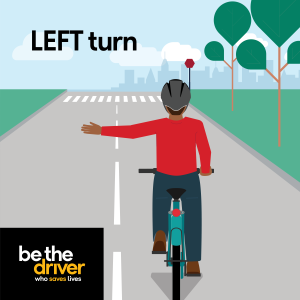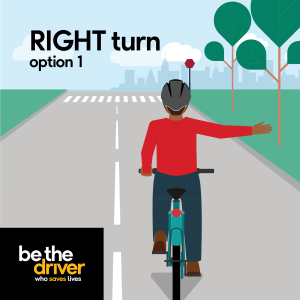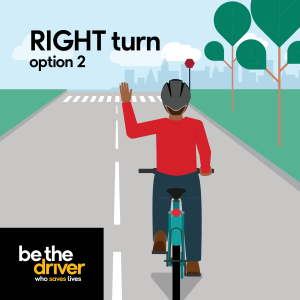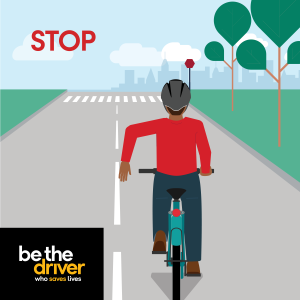
Unlike driving a car or operating a motorcycle, there’s no license for riding a bicycle on the road. For this reason, it is important for bicyclists to use proper directional hand signals to show drivers they are about to turn or stop. Just as with cars, signaling — to turn or slow down can give others time to anticipate your movements and react. Hand signals are a crucial skill, intuitive to learn, easy to use and will help keep bicyclists safe on the road. Here, we explain all bike hand signals, what they represent and how cyclists should use them.
Bike Hand Signals and What They Mean
| Signal (Back View) | What it Means |
 |
Left TurnExtend your left arm. Some bicyclists prefer to do this signal with their hand flat, all fingers extended. It’s also fine to point with your index finger. |
 |
Right TurnThere are two versions of the right turn signals for bicyclists, and most would agree this is the clearest. Extend your right arm and signal with all fingers extended or point with your index finger. |
 |
Right Turn (Classic Signal)This is the classic right turn signal for bicyclists, from the days before cars had turn signals. It is still acceptable but is much less intuitive in both use and interpretation. |
 |
Slowing / StoppingExtend your left arm and bend it at the elbow, hand pointing downward, to indicate that you’re slowing or planning to stop. This is one of the most helpful signals. Since bicyclists don’t have brake lights like a car, it will reduce the risk of rear-end crashes. |
Signaling Tips for Bicyclists
Make it a Habit
Always use hand signals when you ride, even if there are no vehicles in plain sight. That way, you’re less likely to forget when you’re riding in traffic.
Look Back Before Signaling
Always take a quick look over your shoulder before you signal. It allows you to assess whether your turn, lane change or stop is safe.
Signal 100 Feet Before Turning
This safe distance gives drivers around you time to react, adapting their speed and position if necessary.
Hold That Signal 2-3 Seconds
Again, ensure that everyone around you has an adequate opportunity to see your signal.
Maneuver with Both Hands on the Bike
Once you’ve signaled and indicated your intention, put both hands back on the handlebars. This will give you the best control of your bike as your change lanes, turn or stop.
Ride Like You’re Driving a Car
Hand signals are only part of the equation. When you’re riding your bike on the road, it’s safest to ride as if you’re driving a car. Keep safe following distances and stay in your lane. When passing a car or turning, use the appropriate lane to do it safely.
Bike smart and stay safe on the road!